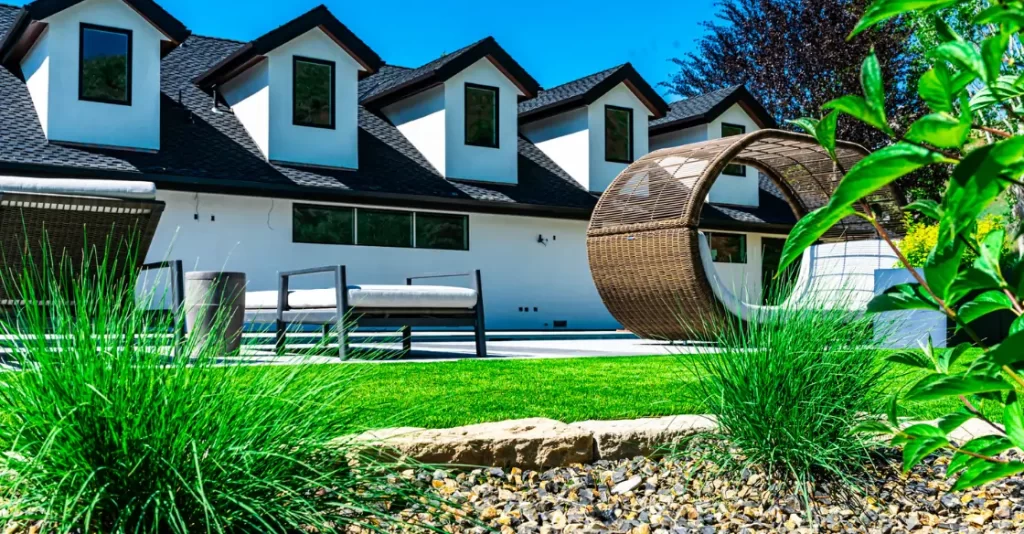If you’ve decided artificial turf for your home is the next home improvement project you are ready to tackle, you need to understand how to do it, so your investment in turf can last for years.
While installing artificial turf is an easy process, it can be time-consuming, easily taking up two to three weekends. You don’t need extensive knowledge to install your own artificial turf, but you do need patience and care. Here is how you can install your own artificial turf in Austin, San Antonio, and other central Texas locations.
Supplies for DIY Artificial Turf Installation
In order to complete your artificial turf installation, you will need some key tools and supplies to make it a success. Here are many of the items you will need (depending on your particular area, you may also need other supplies for removing grass or weeds).
- Artificial turf
- Shovel
- Carpet Blades
- Wheelbarrow
- Infill
- Rake
- Glue
- Rubber mallet or hammer
- Landscape staples, nails or stakes
- Drop spreader
- Broom
- Scissors
- Gloves
- Knee pads
- Base material

How Install Artificial Turf
Once you’ve gathered the materials you need to make your installation a success, you need to begin to prepare your lawn for turf installation.
- If there is still grass (dead or alive) in the area, you will need to remove the grass and 2-4 inches of topsoil. Depending on how much grass there is, this could take a while. You may need to kill the grass to avoid it coming back in the future after the turf has been installed.
- If the grass has already been removed, you will still need to remove any rocks, leaves, or debris in the way. There should be nothing remaining on the surface of the dirt or area you plan to lay the turf.
- Once the area has been cleaned up, you need to level the ground. The area should be as level as possible. You may need to fill in certain areas with dirt to make the surface smooth and level. As you add the base to ensure it’s level, you may also want to consider a weed barrier to prevent weed growth in the area.
- Then, you will need to make sure there is a slight grade to the area. This will ensure proper drainage when it rains or you clean up your turf with a hose.
After your area is clean, level, and graded, you are ready to begin laying the turf.
- The first thing you will need to do when laying the turf is cut it down to the correct size and shape. If you have a square or rectangular area, this should be relatively easy. However, not all lawns or turf areas are a perfect square with straight edges. That’s okay! You will just need to ensure you are measuring and cutting to the correct shape that your space occupies. Of course, make sure you have chosen the best artificial turf for your home.
- Once the turf is cut to size, it’s time to lay the turf. If you have multiple pieces of turf you are using to fill the area, be sure the blades are going in the same direction to keep a uniform look across the synthetic lawn. Be gentle as you move the turf into place so you don’t shift your level base too much.
- When the turf is exactly where you want it, from edge to edge and covering the entire space, you will want to glue the seams to secure the turf in place. Let the glue set for about 15 to 20 minutes.
- Then you’ll want to secure the perimeter. This is done with the turf or landscape nails. You should put a nail at least every 6 inches around the perimeter of your lawn.
- Finally, you will want to spread the infill. You can do this with a seed or infill spreader so that it is evenly applied throughout the artificial lawn.
- Once the infill is down, you should brush it into the turf. This is done with a coarse broom. This will also help to fluff the grass blades so it looks more natural (brushing your turf is also recommended maintenance to improve appearance in heavily trafficked areas).

Common Mistakes to Avoid
Some of the most common mistakes that are made with Central Texas turf installations are easy to avoid if you take care to follow DIY instructions. Some issues that people may see include:
- Uneven base: if you don’t smooth the base material and ensure there will be proper drainage, you could run into issues in the longer term. Take the time to ensure the base is even because your turf will be a reflection of the base that’s underneath.
- Ignoring the grain of the turf: when you don’t look at the direction of the turf blades, you can get a messy appearance. Before gluing and nailing the turf in place, make sure the blades are all going in the same direction.
- Skipping the weed barrier: if you don’t lay down a layer of landscape fabric or weed barrier, you could have some weed growth that will cause frustrations down the road.
If you’re ready to get started on your artificial turf installation, get in touch with the synthetic turf pros at SYNLawn Dallas, who can help make sure you have all the tools you need and guide you in your turf selection process.

